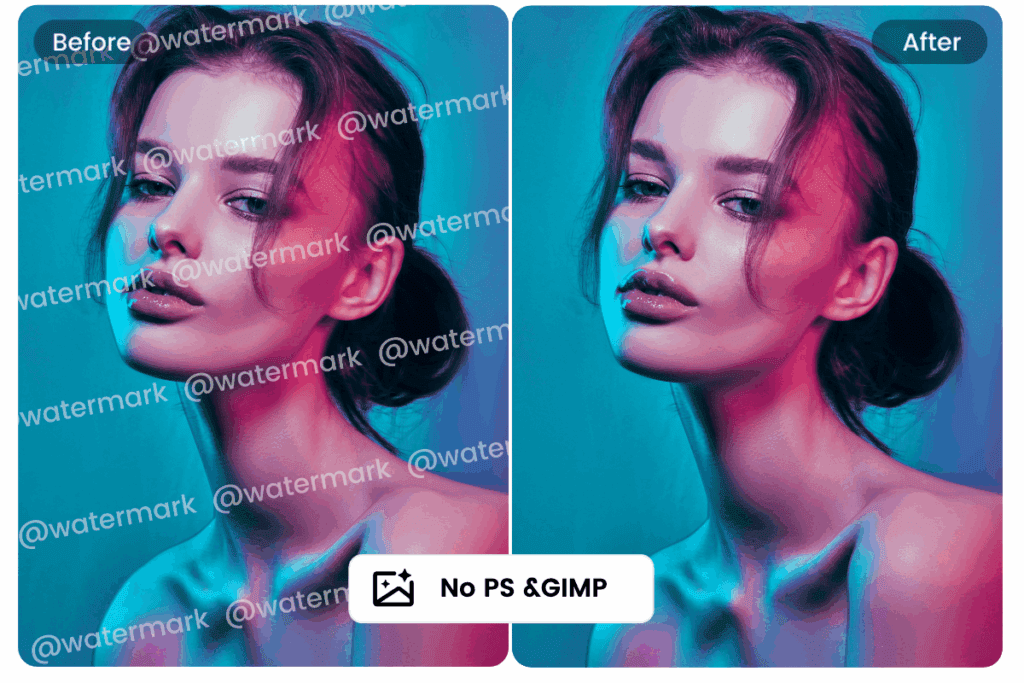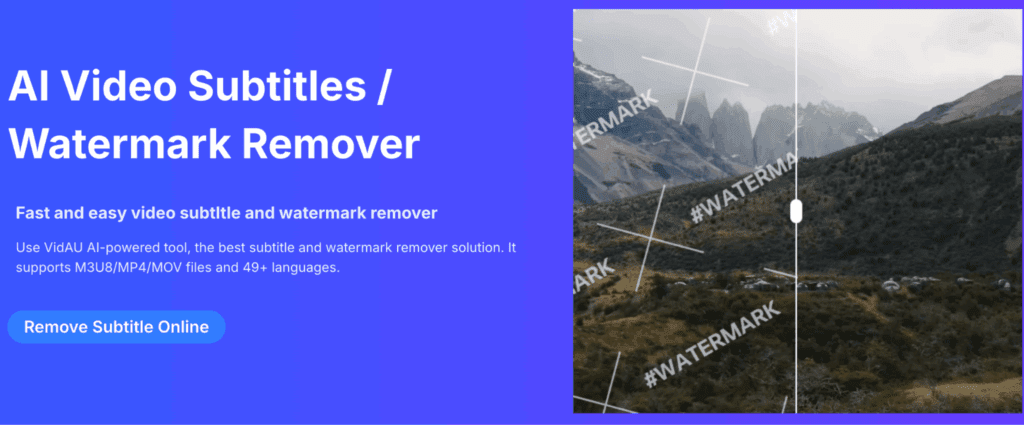How To Remove Watermark from Photo (Legally and Effectively)

Watermarks are often added to photos to protect ownership or indicate copyright. But there are legitimate reasons you might want to remove one for example, if it’s your own image, a stock photo you’ve licensed, or a project asset with permission. In this guide, we’ll cover the safe, legal ways and how to remove watermark from photo effectively, how AI-based tools compare to manual editing, and what to avoid if you don’t want to run into copyright issues.
Why Photos Have Watermarks
Watermarks exist primarily for copyright protection and branding. They prevent unauthorised use of images and ensure proper attribution. You’ll often see them on:
- Stock photos (e.g, Shutterstock, Adobe Stock)
- Photography portfolios
- Digital artwork previews
- Branded marketing materials
Legal and Ethical Considerations – How To Remove Watermark From Photo
Before you start removing a watermark, understand this: removing a watermark without permission can be illegal.
Under the U.S. Digital Millennium Copyright Act (DMCA) and similar laws elsewhere, removing or altering copyright management information like a watermark without authorization is considered infringement.
When It’s Legal to Remove a Watermark
- You own the image (e.g., your camera photo with your logo)
- You have a commercial or royalty-free license that allows editing
- The image is in the public domain or licensed under Creative Commons for modification
When It’s Not Legal
- You downloaded a watermarked photo without purchase or license
- You’re editing an image that still belongs to someone else
- You’re redistributing or publishing the modified image
Method 1: Manual Removal in Photoshop (or GIMP)
If you’re comfortable with image editing tools, manual removal gives you full control and often produces the cleanest results.
Steps (Using Photoshop or GIMP)
- Open your image in the editor.
- Use the Clone Stamp or Healing Brush to sample a nearby texture.
- Carefully paint over the watermark.
- Adjust brightness or texture to match surroundings.
- Zoom out and refine edges using the Spot Healing Brush.
Method 2: Remove Watermark with AI or Online Tools
For quick, automatic results, AI-based watermark removal tools can work surprisingly well. These use machine learning and inpainting techniques to reconstruct missing areas of an image.
Steps (Using Photoshop or GIMP)
| Tool | Key Features | Pros | Cons |
| WatermarkRemover.io | Free AI watermark eraser | Fast, no signup | Limited to online uploads |
| PicWish | AI tool with background and watermark removal | Good for large batches | Requires account for HD exports |
| HitPaw Watermark Remover | Desktop app for Windows/Mac | Multi-format support | Paid version for full quality |
| Apowersoft Online Remover | Web-based tool | Simple, drag-and-drop | Limited privacy control |
Steps (Using Online AI Tool)
- Visit your chosen tool’s website.
- Upload your image.
- Highlight or mask the watermark area.
- Let the AI process and preview the result.
- Download the cleaned image.
Method 3: Using Mobile Apps – How To Remove Watermark From Photo

If you’re editing on your phone, these mobile apps make watermark removal fast and convenient. How to remove watermark from photo
| App | Platform | Notes |
| Snapseed | Android/iOS | Use the “Healing” tool to erase marks manually |
| TouchRetouch | Android/iOS | One of the most accurate mobile inpainting tools |
| Pixlr Mobile | Android/iOS | Includes clone and patch tools for fine control |
Method 4: AI Inpainting and Advanced Techniques
AI “inpainting” reconstructs image areas by analyzing patterns, colors, and edges around a missing region. Modern diffusion-based models like the SADRE model, 2025 can even handle complex textured watermarks.
Why It Works
Inpainting networks predict what the missing area should look like by learning from billions of similar images.
While not perfect, AI reconstruction can outperform manual methods for large or irregularly shaped watermarks.
VidAU: AI-Powered Video & Watermark/Subtitles Removal Tool

While most of the earlier methods focus on photos, VidAU offers a specialised AI tool for removing watermarks and subtitles from videos, useful when your watermark appears in motion or overlayed on video content.
Conclusion:
Removing a watermark from a photo can be done responsibly, as long as it’s for legitimate use and you have the right to edit the image.
Manual tools give you precision, while AI-powered platforms offer speed. But always remember: respecting ownership and copyright isn’t just legal compliance, it’s ethical professionalism.
Frequently Asked Questions
Q. Is it illegal to remove a watermark from a photo?
A. It depends. If the image is copyrighted and you don’t have permission, removing the watermark violates copyright law. You can remove watermarks from images you own or have licensed.
Q. What’s the best free watermark remover?
A. AI tools like WatermarkRemover.io and PicWish are popular free options. For higher-quality or larger images, desktop tools like HitPaw or Photoshop provide better control.
Q. Why does my image look blurry after removing the watermark?
A. That happens when the inpainting algorithm struggles with texture. Try cloning manually or using higher-resolution input.
Q. Can AI perfectly remove complex watermarks?
A. AI can reconstruct background patterns fairly well, but it’s not flawless. Manual touch-ups are often required for perfection.





